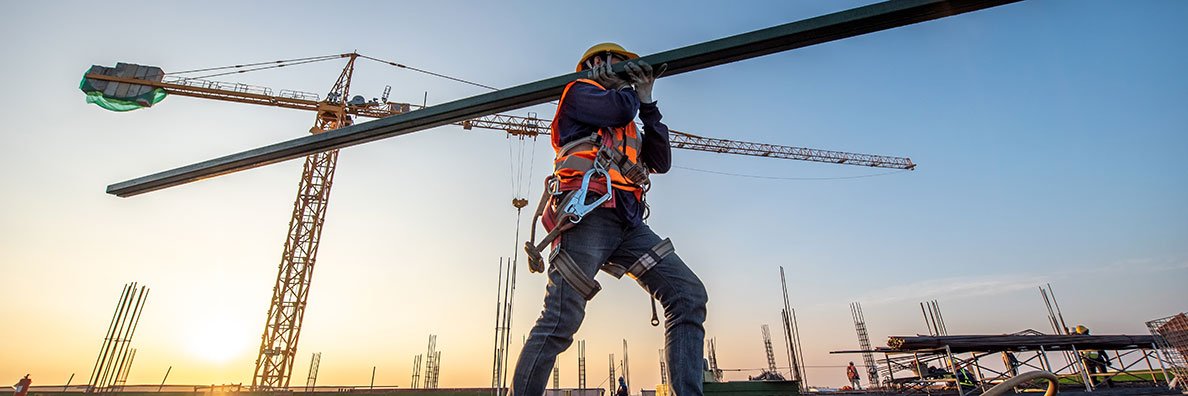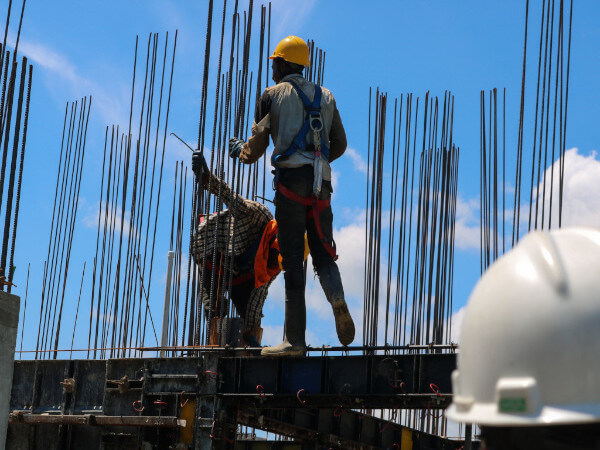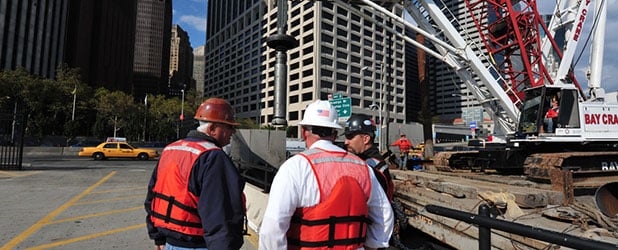Home » Articles posted by Diane Hopper
Author Archives: Diane Hopper
Choosing the Right Commercial Roofing Materials
Keeping the roof of commercial buildings in good condition is key to preventing damage and reducing energy consumption. However, choosing the right roofing materials to meet these needs varies from customer to customer. Read on Roofing Columbus GA to learn more.

Commercial and industrial properties require different types of roofs. Unlike residential properties typically outfitted with shingles, most commercial structures are equipped with flat or low-slope commercial roofs.
Commercial roofing comes in various types to accommodate businesses’ different environments. Sometimes, roofs are categorized by the type of structure that sits on them like flat roofs or low slope roofs and other times they are grouped according to the roofing materials used to build them. For example, built up roofing (BUR) is a popular type of roof that uses layered asphalt and fabrics to form a durable membrane. Other types of commercial roofing are single-ply membranes that use rubber or synthetic materials. Some of these include EPDM and Thermoplastic Polyolefin (TPO).
Shingles are commonly seen on residential properties with steep roof lines but they also have applications for commercial buildings, especially those located in wooded or wet areas. There are many shingle options to choose from, including asphalt, architectural, ceramic and slate and they can be affordable and easy to install. However, their lifespan is shorter than some other commercial roofing types and they are vulnerable to mildew and moss when they are shaded.
Metal roofs are another type of commercial roofing that is popular for its durability and longevity. They can be made out of steel, copper or aluminum and have high fire resistance ratings. They shed snow and rain very well and can last up to 50 years with the right maintenance. The only drawback of a metal roof is that it can be prone to corrosion. However, there are now metal roofing systems that have protective surface layers that manage this risk.
Another popular option for commercial roofs is rubber or PVC. These are single-ply membranes that are chemically adhered to the insulation on some commercial facilities. These are relatively inexpensive and durable. They have a wide range of color options to add style and are highly resistant to UV and heat.
Another benefit of these types of roofs is that they are very energy efficient. They can help reduce a building’s cooling costs by reflecting the sun’s rays. They are also lightweight and puncture-resistant. The only downside is that these roofs are more expensive than other commercial roofing options.
There are many different types of materials that can be used in commercial roofing. Some of these include single ply membranes, asphalt shingles, concrete tile, wood shakes and slate. The type of roof will dictate the type of material that is used. For example, a steep sloped commercial roof will require a specific type of roofing material that is designed for those type of slopes.
A single ply commercial roof membrane is generally made of rubber or plastic. These are manufactured in a factory and can be installed on the roof using one of several methods including fully adhered, mechanically attached or ballasted. Single ply commercial roofs are extremely durable and offer excellent resistance to weathering, punctures or tears, and bacterial growth. They also are highly reflective, helping to reduce energy costs in the building. These commercial roofs are also easy to repair and maintain.
EPDM is a popular type of single ply commercial roofing that is available in various colors and has a long lifespan. This durable roof membrane offers good flexibility and can handle structural fluctuations better than other flat roof options such as TPO or PVC. It is also fire rated and has excellent air and water resistance.
Another popular type of commercial roofing is a metal roof. These roofs are typically comprised of galvanized steel, aluminum or copper and are designed to be both waterproof and durable. They also have the added benefit of being able to be integrated with snow removal and solar systems.
Modified bitumen (MB) is a common type of low-slope or flat commercial roofing. It is constructed from a layer of reinforcing fabric that is covered with an asphalt mixture. This is then covered with a gravel layer to help provide extra protection for the roof. This is a tough roof type that can withstand a variety of temperatures and can last for up to 20 years.
A silicone roof coating can be rolled or sprayed on to provide a protective layer for a variety of commercial roof types. This includes tar and gravel roofs, single ply membranes, as well as EPDM. The key benefit of a silicone roof coating is that it is highly resistant to ponding water. This is a common issue that can occur on some flat or low-sloped commercial roofs and is often caused by improper drainage systems.
When replacing a commercial roof, the goal is to provide the business with a sturdy structure that protects contents and occupants from rain, snow and debris. In addition to the structural integrity of the building, many regions have stipulations regarding energy efficiency which must be taken into consideration when choosing a new roof.
The type of roofing chosen is important, as is the installer. A reputable roofing company will work with you to find the best solution for your building and its use. For example, a restaurant will have different needs than a jewelry store. A local roofing contractor will have experience in the various types of roofs and be familiar with any stipulations that may affect your specific region.
Some of the most common commercial roofing systems include single-ply membranes, concrete, modified bitumen and built-up roofing system (BUR). The single-ply membranes such as TPO and PVC offer durability, low maintenance and cost effectiveness. They are also highly reflective and can help reduce cooling costs. The built-up roofing system, with a tar and gravel coating, is an older low-slope roof that offers flexibility and can be adapted to specific building requirements.
Depending on the type of roofing, the installation process can take between four and 12 days. The amount of time will depend on the size and complexity of the project, as well as weather conditions. In addition, the permit process can often cause delays. A good roofing company will work diligently to avoid any unforeseen delays, but they cannot control everything.
A key aspect of a quality commercial roof is proper ventilation. If this is not addressed, a roof could leak or become damaged over time. This can lead to costly repairs or even the shutdown of a business. To prevent this, a roofing contractor should inspect the roof for adequate air flow and proper insulation.
Both residential and commercial roofs need regular maintenance. A professional roofer can help maintain the health of a roof by removing any debris from gutters and downspouts. They can also make sure that all eavestroughs are open and free of obstructions, which can cause water to back up into the roof and damage the interior.
The commercial roof is one of the most important investment that property owners make in their structures. It protects the occupants and contents from outside elements, and is crucial to the building’s energy efficiency. Unfortunately, the roof is often neglected. Many owners only think about it when a problem arises, such as leaks or interior damage.
The best way to ensure that the commercial roofing system will continue to perform properly is to create a preventative maintenance plan with a local professional roofing contractor. Keeping up with the plan will save money, minimize costly repairs, and extend the life of the system.
An effective preventative maintenance program should include visual inspections, gutter and drain cleaning, debris removal, small repairs, and a full roof survey. It should also include recording the results of each visit and providing photo documentation. This will help to identify the cause of the problem and provide the building owner with a clear picture of the condition of the roof.
A commercial roofing expert will be able to determine the appropriate level of repair, from minor repairs to replacement and/or re-roofing. The expert will be able to provide recommendations based on the age of the roof, the current condition, and use of the building.
Inspecting the entire roof for any signs of damage or general wear is critical to avoiding expensive repairs. A thorough inspection should include looking at the following:
Deterioration of sealant – This is usually the result of long term exposure to weathering. Common areas of concern are above pipe boots, metal flashing details, gulleys, and termination bars. Commercial roof maintenance will inspect these areas and re-seal as needed.
Drainage issues – This can be caused by the accumulation of water, debris, or improper slope and drainage. If left unchecked, these issues can lead to ponding water and degrade the roof membrane. Commercial roof maintenance will check for clogged gutters and drains, sagging drains, or damaged ponding areas.
A commercial roof should be inspected on an annual basis to avoid problems. A good roofing company will be able to provide a written report with photos, discuss any issues found and recommend the next steps. A regular maintenance schedule will also help to extend the life of the roof and keep it under warranty.
Travel In Today’s World – The Best Tips Available!
Traveling is an excellent way to do something new and learn about different cultures. There’s no denying it is also quite a demanding hassle. These tips will reduce the stress involved in preparing for your next trip abroad.
Do not bother wrapping gifts. A lot of people buy small souvenirs when traveling. If you are planning on bringing something back to a loved one, don’t bother wrapping it before you return home. On the off chance that your bag is inspected, it will have to be unwrapped anyway.
Check out user reviews. The experiences of others who have traveled to the same location can be much more helpful than the biased sales information from the destination itself. Also, check out guest-contributed photos, which will be more real and less doctored than the professional photos. Be sure to look for recent reviews, and find ones written by people having similar vacation needs to your own.
To stay in good health, you should go see your doctor after traveling abroad. Ask your doctor to test you for exotic diseases to make sure you have not contracted anything while abroad. Just in case you contracted something, you can get the help you need quickly and not contaminate the people around you.
If you are taking your car to the airport and leaving it there, always make a note of where you parked it. You should write it on a piece of paper or put it in your phone. Most likely when you return from your trip, your memory will not be enough to find it.
The logistics involved in planning and executing a vacation can make you question why you wanted to take the vacation in the first place; but once you are there and experiencing the fun of your vacation getaway, you will be glad that you read and implemented these tips for putting together a great vacation.
You can also visit our other websites and post your article.
Super Street Car Performance, FEDERACAO TRIATLO – COMPETITIVE DANCE CLASSES, CT Miller Vine Yards, Willys Off Road Supply, The Rhumb Line Green Port, My Kitchen Rules UK, Pralognan-Vanoise, Scottish Dance Videos,Green Ville Hotels Today, Confluence Creative Arts Center, Platu25, The Vine Yard By Mellon,Curious Oyster Seminars, Drift Wood Lodge Online, The Persimmon Tree Store, THE JAVA TREE CAFE, Elsberry Tours and Adventures, THE RAYBAN OUTLETIT, Addiction to Video Games, ET TEAM, Moab 4×4 Parts, Holiday Shores Motel, Marcreynoldssail Maker, Yorke Peninsula Accommodation, Temenos Golf Club Superb 18-hole Course, Women’s Health Guide, Best-Singapore-Travel-Guide, Sail Series Promotions, Charm and Bead Collectibles, Arizona Solar Society, Automotive-Air-Conditioning-Vehicle-Parts, SMART RACING, Mikes Austin Tree Service, Colori Kitchen To Go, Astoria Interiors, Samsolakyan, MOUNTAIN VIEW SOLAR, DISABILITY RAMPS, New Mexico Beagle Rescue, Ray Caron For Maine
Sun Protection Tips For Construction Workers

For many, the summer months mean vacations at the beach, lounging by the pool, and spending more time outside in the sun. For construction workers, summer means working long hours in the hot sun. All that time in the sun can lead to an increased risk of sunburn, sun poisoning, and skin cancer.
![]()
Did you miss our previous article…
https://www.arizonasolarsociety.com/?p=1791
Big, but Also Odd, Jobs Gain for Canada in June

In June, Canada added nearly a quarter of a million net new jobs, according to the Labour Force Survey report assembled and published by Statistics Canada. The +231,000 increase, however, was not comprised of a usual mix of gains in both full-time and part-time work. Rather, full-time employment shrank by -33,000 jobs while part-time endeavors took off to the tune of +263,000 positions.
![]()
Did you miss our previous article…
https://www.arizonasolarsociety.com/?p=1787
June’s Nonresidential Construction Starts +14% M/M, But -11% YTD

A Compelling Megaproject Story
ConstructConnect announced today that June 2021’s volume of construction starts, excluding residential work, was $38.4 billion (green shaded box, Table 8 below), an increase of +14.4% vs May 2021’s $33.6 billion (originally reported as $32.5 billion).
![]()
2021 in Review: Europe and the Middle East’s Year in Construction

As the end of 2021 fast approaches, we have begun to look back on another challenging – but exciting – 12 months in construction.
At the end of the most disruptive year on record – 2020- we knew there would be challenges and changes ahead. The lasting effects of the Covid-19 pandemic continued to make its mark on the world over, but the news and rollout of vaccination programmes brought us much needed hope. And with the continuing impacts of Brexit, climate change and skills and labour shortages, there is no doubt that construction firms were keeping their resiliency plans firmly at the front of their minds.
However, it’s safe to say that we again couldn’t have predicted the long-term impact of Covid-19 on our sector with further lockdowns across much of Europe as we entered 2021 which not only halted productivity and project progress but also contributed to a global materials shortages.
As ever, many businesses, technology has remained mission-critical but the way in which companies are adopting to this is bringing back some clear competitive differences across the market. We’ve brought together experts from our Autodesk Construction Solutions (ACS) team in Europe and the Middle East to share their thoughts on the year we’ve had and what we’ve learned.
Digital plans evolving from survival mode to long-term business strategies
For many construction companies in 2020, digital ways of working were forced upon them to keep afloat. Investment in solutions to keep operations moving in such uncertainty become a necessity and companies with long-term digital strategies were able to keep focused and in places, accelerate their goals.
District Manager for DACH, France and Spain Marvin Theissen reflects; “A Common data environment is always key in effective collaboration when it comes to remote working, and many companies recognised this in 2021. Despite this, 2021 also demonstrated that layering product and solutions on top of each other without a clear strategy can lead to systems fatigue for end-users.”
But as Nordics District Manager Nicholas Klokholm explains, “Companies are becoming more sophisticated in their needs and their employees expect this. Project teams want to work more holistically rather than using point solutions, and this will enable them to capture and use their data for better insights.”
New ways of working creating competitive advantages
When it comes to the marketplace, owners and main contractors also expect to experience a more streamlined digital experience when it comes to viewing and collaborating on their projects. Data that is captured in one place and used to provide richer insights can help decision-makers on projects.
Sander Lijbers, District Manager at Autodesk for Benelux says, “2021 was the year for refining and improving the use of technology. Companies that did this and could demonstrate it had a competitive edge when it came to bidding for work in our industry. Having a central source of truth shows project owners that risk and uncertainty are being addressed and reduced which is some of their biggest concerns.”
Shortages in materials and labour leading to skills in demand
The materials shortages that plagued the industry for much of 2021 is unfortunately here to stay. As cost of materials skyrocket and delays seep into schedules, a focus on skills in the industry emerged. For Europe, the major effects of Brexit are starting to impact the labour market. Demand for construction workers across the UK steadily increased throughout 2021 as migration over Europe changed in light of new Brexit legislation.
According to Account Executive for UK & Ireland Brian Roche, the demand on skills led to project pressures and more competition within the market. “Employees expect to work more flexibly in line with other industries. The rise of remote working in 2020 showed us that collaboration can continue regardless of your geographical location with the right tools to support you, and this will be a decision-making factor as skilled workers look for roles within the industry.” Firms working with paper-based and manual processes run the risk of being left behind when it comes to attracting and retaining top talent.
Senior Customer Success Manager in the Middle East, Mohammad Abou Assali recognises that now more than ever, the workforce is looking closely at the mission and values of companies ensuring they align to their own. “In both 2020 and 2021, key issues in the world really came to the forefront. And the time to respond and make change is now. The construction workforce is increasingly aware of their own priorities and want to see more from the industry when it comes to reducing our carbon footprint, so companies need to show their own commitment and advancements towards changing for the better. If they don’t, they risk losing out.”
People remain at the heart of the construction industry
Despite great progress in digitising and modernising the construction industry for the better, people will forever remain at the heart of the industry. Regardless of the technology being deployed or workflows established, people and their experience must be placed at the centre of any change. As District Manager Nicholas Klokholm says, “Change is difficult, and it doesn’t just happen. Data needs to be the enabler for all that we do in this industry and it is the driver for change.” For Sander Lijbers, District Manager for Benelux, 2021 was the year for preparing for the future; “Getting your own organisation in order was a key priority in 2021 and if you didn’t do that then 2022 is the time to do it – this way you’ll be ready for what is to come next.”
The post 2021 in Review: Europe and the Middle East’s Year in Construction appeared first on Digital Builder.
Top 10 Major Upcoming Entertainment Facility and Stadium-Arena Construction Projects – U.S. – July 2021

The accompanying tables show the top 10 major upcoming entertainment facility and stadium-arena construction projects in the U.S. They are all in the planning stage and are mainly new projects, but may also involve additions and/or alterations.
![]()
Did you miss our previous article…
https://www.arizonasolarsociety.com/?p=1765
Top 10 Major Upcoming Alberta and British Columbia Construction Projects – Canada – July 2021

The accompanying tables shows the top 10 major upcoming Alberta and British Columbia construction projects in Canada. They are all in the planning stage and are mainly new projects, but may also involve additions and/or alterations.
![]()
Did you miss our previous article…
https://www.arizonasolarsociety.com/?p=1761
Top 10 Largest Construction Project Starts in Canada and Trend Graph – June 2021

The accompanying table records the 10 largest construction project starts in Canada in June 2021. Also included is the latest trend graph on starts. This looks at 12-month moving totals of the civil and nonresidential building categories in Canada.
![]()
Did you miss our previous article…
https://www.arizonasolarsociety.com/?p=1749
‘Mining’ for Best City Labor Markets, U.S. and Canada

As the U.S. and Canadian economies recover from horrific coronavirus-induced slides last year, it’s interesting to observe where, among cities, the pace is quickening most resoundingly.
![]()
Did you miss our previous article…
https://www.arizonasolarsociety.com/?p=1741